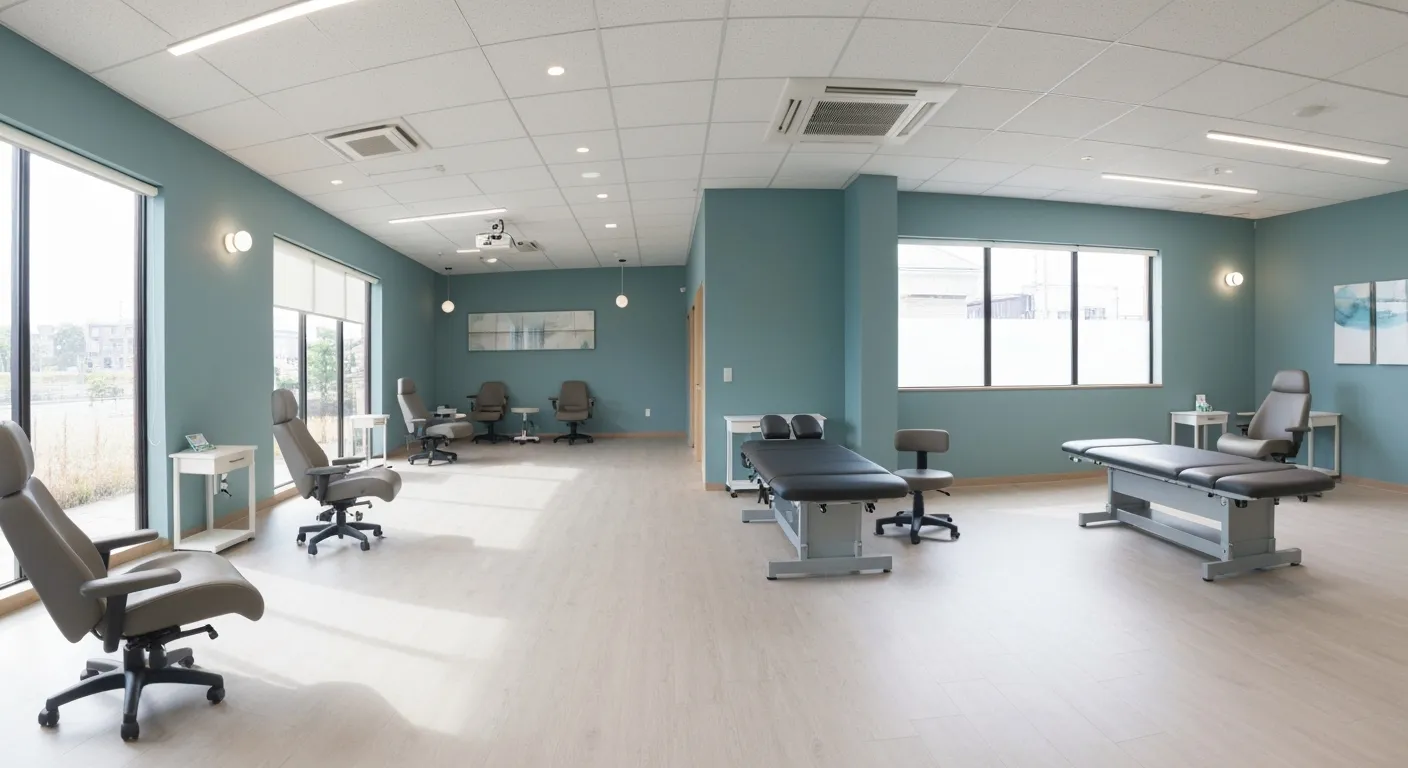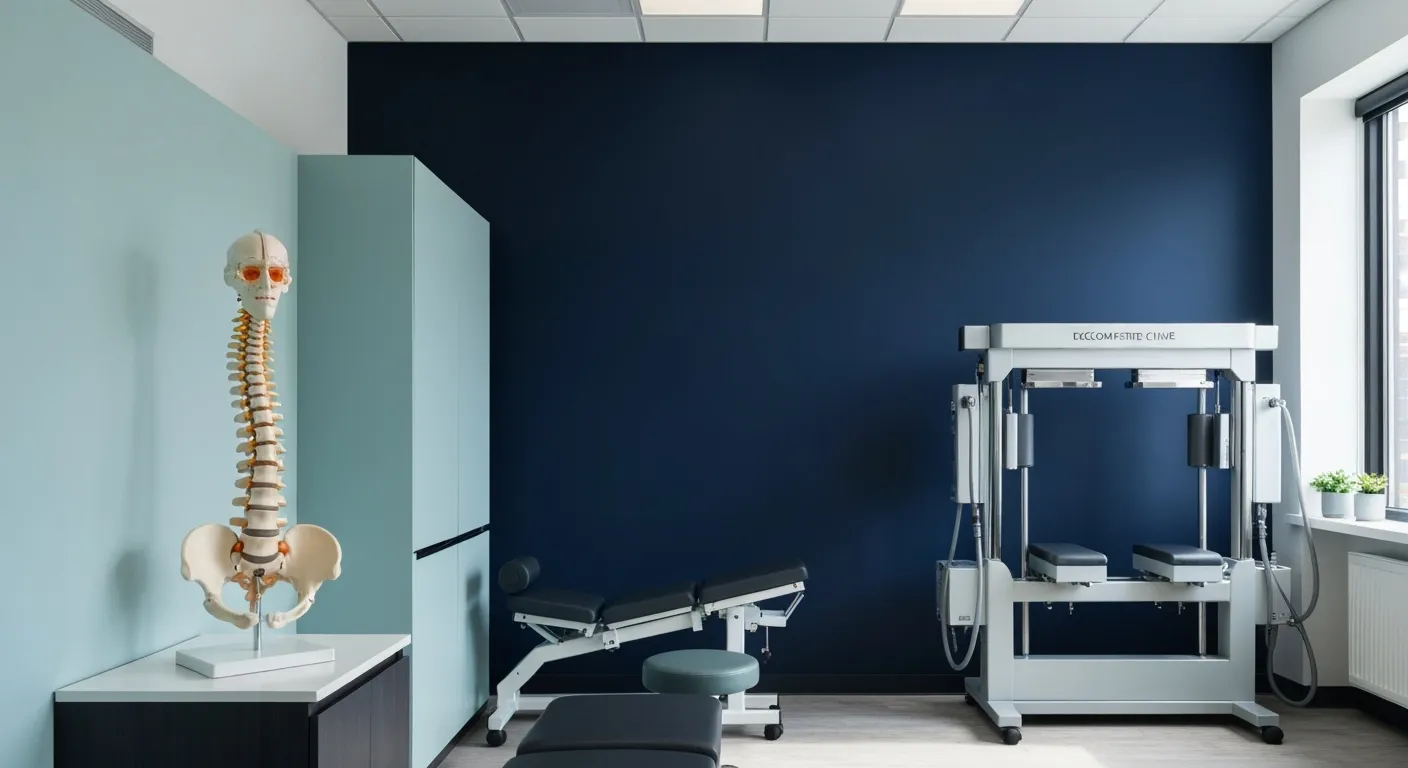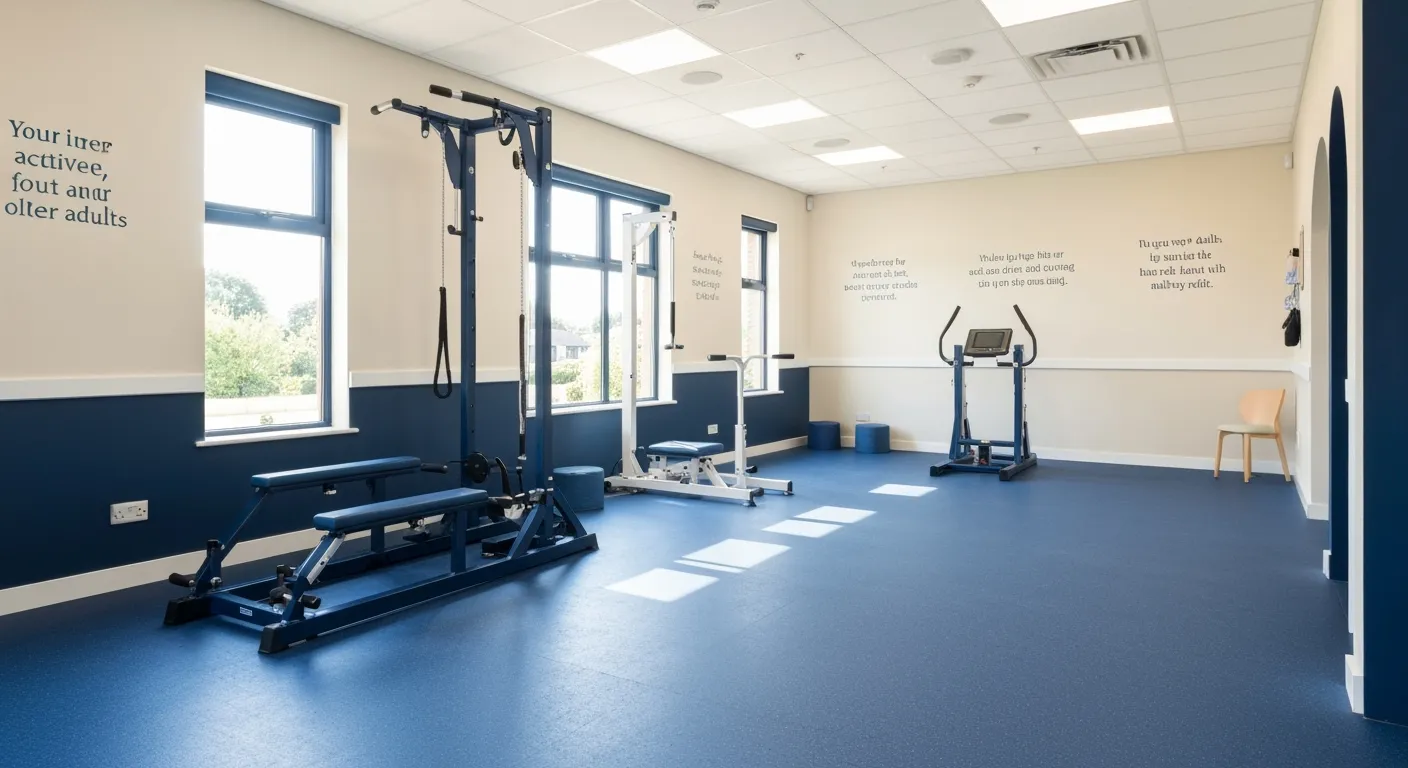Combining Chiropractic and Physiotherapy for Comprehensive Pain Relief
October 8, 2025
8 min

Introduction to a Collaborative Path for Pain Relief
Chronic pain and musculoskeletal discomfort affect millions worldwide, leading to decreased quality of life and functional limitations. While chiropractic care and physiotherapy have independently shown efficacy in managing such conditions, recent trends emphasize the synergistic benefits of combining these approaches. This article explores how an integrated chiropractic and physiotherapy regimen provides comprehensive pain relief by addressing both spinal alignment and muscular function, enhancing recovery, mobility, and long-term wellbeing.
The Rationale and Benefits of Combining Chiropractic Care with Physiotherapy

Combining chiropractic care with physiotherapy offers a holistic way to manage and alleviate musculoskeletal pain effectively. This integrated approach addresses both the structural and functional aspects of the body. Chiropractic care primarily focuses on correcting spinal misalignments through spinal adjustments, which help reduce nerve interference, relieve pain, and improve mobility. On the other hand, physiotherapy concentrates on strengthening muscles, enhancing flexibility, and restoring movement through targeted exercises, manual therapy, and modalities such as ultrasound and electrical stimulation.
The synergy of these two disciplines ensures a comprehensive treatment plan that tackles multiple root causes of pain. Chiropractic adjustments can provide immediate relief by realigning the spine and easing nerve compression, while physiotherapy promotes long-term recovery by building muscle support and correcting movement patterns. This combination can accelerate healing, improve overall mobility, and help prevent future injuries.
Both treatments are natural and drug-free, emphasizing healthy, non-invasive methods to restore function and enhance well-being. Techniques like massage therapy, and manual manipulations often complement each other, making the combined approach more effective than either therapy alone. By focusing on both the structural and functional components of the musculoskeletal system, patients benefit from personalized care that targets their specific conditions.
In summary, integrating chiropractic care with physiotherapy ensures a thorough, effective, and sustainable approach to pain relief. It promotes long-term health and function, making it a preferred choice for those seeking a comprehensive, holistic treatment.
Integration of Techniques: Managing Musculoskeletal Pain through Complementary Approaches

Combining chiropractic care and physiotherapy provides a thorough, multi-pronged strategy for addressing back, neck, and musculoskeletal pain. This integrative approach leverages the strengths of both disciplines to enhance patient outcomes.
Chiropractic techniques such as spinal adjustments and manipulations aim to restore proper alignment and improve nervous system health. These adjustments can relieve nerve interference, reduce inflammation, and increase joint mobility. Chiropractors may also use soft tissue therapies, instrument-assisted adjustments, and postural exercises to support spinal health.
Physiotherapy complements this by focusing on active recovery and functional restoration. Physiotherapists prescribe personalized exercises to strengthen muscles , improve flexibility, and enhance overall movement. They utilize manual therapy techniques like joint mobilization, soft tissue massage, and dry needling. Modalities such as electrical stimulation and ultrasound are also common to reduce pain and promote tissue healing.
Patient education plays a crucial role in this combined approach. Therapists instruct patients on proper posture, ergonomics, and self-management strategies, empowering them to maintain improvements outside clinic sessions.
Evidence suggests that integrating chiropractic adjustments with physiotherapy modalities accelerates healing, offers more durable pain relief, and prevents future injuries. This multimodal pain management addresses both structural issues and muscular imbalances, providing a holistic treatment plan tailored to individual needs.
Most successful programs involve collaboration between practitioners, continual reassessment, and a focus on long-term health. Combining spinal adjustments, manual therapy, therapeutic exercises, and patient education results in a comprehensive care plan that optimizes recovery and promotes overall musculoskeletal wellness.
Scientific Evidence Supporting Combined Chiropractic and Physiotherapy Treatments

Numerous studies and systematic reviews have evaluated the effectiveness and safety of combining chiropractic care with physiotherapy for musculoskeletal pain management. Clinical trials, such as those involving patients with low back and neck pain, report that combined treatments can lead to moderate improvements in pain relief, function, and overall patient satisfaction. For example, a comprehensive Swedish trial involving 750 active-duty military personnel found that adding chiropractic interventions—including spinal manipulative therapy—to usual medical care resulted in better short-term pain outcomes and higher patient-reported improvement. Importantly, minor adverse effects like soreness or stiffness were the only reported risks, emphasizing the safety of these combined therapies when performed by licensed practitioners.
Systematic reviews support the use of spinal manipulation, a core chiropractic technique, showing it can significantly reduce neck and back pain and improve cervical motion with minimal complications. Both professions assess and treat the musculoskeletal system extensively, employing diagnostic tools, manual therapy, targeted exercises, and modalities. This multidisciplinary approach enhances recovery, accelerates pain relief, and may even contribute to long-term health benefits such as improved posture and injury prevention.
However, some studies highlight the need for higher-quality research. Despite promising results, effect sizes are sometimes small, and long-term benefits remain less certain. Cost-effectiveness analyses suggest that combined chiropractic and physiotherapy treatments can lower healthcare costs compared to medical management alone, partly due to reduced medication use and fewer invasive procedures. Overall, the current body of evidence indicates that with appropriate practitioner training and patient selection, combined therapy offers a safe, effective, and patient-preferred option for acute and subacute pain conditions.
Continuing research will help clarify which patient subgroups benefit most and establish optimal treatment protocols. As the field advances, further rigorous trials are essential to confirm long-term efficacy and safety, ensuring that integrated chiropractic and physiotherapy care remains a valuable component of comprehensive musculoskeletal health management.
Chiropractic and Physiotherapy Techniques: Procedures, Applications, and Safety

What are the common chiropractic techniques used for pain relief, and what are their procedures, applications, benefits, and risks?
Chiropractors employ various techniques to alleviate pain and improve musculoskeletal health. The most common is spinal manipulation, also called chiropractic adjustment, which involves applied controlled forces to specific joints, predominantly in the spine. The procedure aims to restore proper joint mobility, reduce nerve interference, and promote overall body function. Patients typically lie on a specialized table, and the chiropractor uses hands or instruments to deliver quick, precise thrusts, often producing a characteristic "popping" sound due to gas release in the joint.
Other techniques include mobilization—a gentler form of manual therapy involving slow, controlled movements—and soft tissue therapies like trigger point releases and massage. For more detailed techniques, see 5 common chiropractic techniques for back and neck pain.
These procedures are generally beneficial for conditions like low back pain, neck pain, headaches, and musculoskeletal injuries. When performed by licensed professionals, they are considered safe. However, potential risks include soreness, stiffness, herniated disks, nerve impingements, and very rarely, serious events like stroke, especially after neck manipulations. Ensuring treatment by qualified practitioners and thorough patient screening minimizes these risks. For comprehensive discussion on safety and risks, visit Chiropractic care for pain relief and Chiropractic care for pain relief - Harvard Health.
What physiotherapy methods and strategies are used for pain management, including modalities like electrotherapy and manual therapy?
Physiotherapy offers a comprehensive approach to pain relief through a blend of manual therapies, modalities, exercises, and education. Manual techniques include joint mobilization, soft tissue massage, myofascial release, and trigger point therapy. These are designed to enhance movement, reduce muscle tension, and decrease pain. For more, see Traditional Physiotherapy Interventions for Pain Conditions.
Electrotherapy modalities are frequently used. Transcutaneous Electrical Nerve Stimulation (TENS) employs electrical impulses to block pain signals and stimulate endorphin release. Interferential therapy uses electrical currents to penetrate deeper tissues, providing significant pain reduction, especially in musculoskeletal conditions.
Thermotherapy involves applying heat or cold to modify pain signals. Heat relaxes muscles and increases circulation, providing temporary relief, while cold reduces inflammation and numbs pain. Ultrasound and low-level laser therapy are also employed to promote tissue healing and reduce discomfort.
Beyond modalities, therapeutic exercises are fundamental. Strengthening, stretching, and neuromuscular re-education improve stability and function. Education about posture, ergonomics, and activity modification forms an essential part of a holistic pain management plan. For detailed physiotherapy practices, refer to Physical therapy for pain treatment and Physical Therapy Guide to Pain.
These strategies are often combined with pharmacological and psychological treatments to tailor individualized, effective pain relief regimens. While generally safe, they require proper technique and patient assessment to prevent adverse effects. For multidisciplinary and comprehensive approaches, see Strategies for Effective Pain Management by Physical Therapists and Physiotherapy and chiropractic care – a powerful combination for recovery.
Enhancing Recovery and Long-Term Wellness Through Multidisciplinary Care

Combining chiropractic care with physiotherapy creates a comprehensive treatment approach that significantly accelerates healing, improves mobility, and promotes lasting pain relief. Chiropractic adjustments focus on restoring proper alignment of the spine and nervous system, which helps reduce nerve interference and inflammation. Meanwhile, physiotherapy emphasizes strengthening muscles, increasing flexibility, and restoring movement through targeted exercises and manual therapies. When these strategies are integrated, they work synergistically to stabilize the body's structure and improve functional capacity, leading to faster recovery from injuries and chronic conditions (Combined chiropractic and physical therapy benefits).
A multidisciplinary approach plays a crucial role in managing both acute and long-standing pain. By addressing structural misalignments alongside muscular weaknesses, this collaboration not only alleviates immediate discomfort but also targets root causes, thus preventing future injuries (Multidisciplinary approach to pain management). Patients benefit from improved stability, mobility, and reduced recurrence of pain episodes, supporting overall health and well-being (Benefits of chiropractic care and physical therapy).
Furthermore, an integrated care model incorporates psychological and behavioral strategies, such as patient education and stress management, which enhance coping mechanisms and promote adherence to treatment plans (Patient participation in chiropractic and physical therapy, Effective Pain Management Strategies). This holistic method emphasizes not just symptom relief but long-term health benefits, fostering a balanced and pain-free lifestyle (Holistic treatment plan with chiropractic and physical therapy).
The long-term advantages of such an approach include better posture, enhanced physical resilience, and increased awareness of body mechanics (Improving posture through chiropractic, Improving flexibility with physical therapy). Over time, patients experience sustained improvements in their overall musculoskeletal health, reduced dependence on medications, and an improved quality of life (Improved quality of life from combined therapies). This patient-centered strategy exemplifies how multidisciplinary collaboration can optimize recovery outcomes and nurture long-term wellness (Synergy of Physiotherapy and Chiropractic Care).
Conclusion: Embracing Integrated Care for Lasting Relief
An integrated approach combining chiropractic care and physiotherapy offers a robust framework for comprehensive pain management and musculoskeletal health. By addressing both the structural alignment of the spine and the functional integrity of muscles and soft tissues, this multidisciplinary strategy accelerates recovery, enhances mobility, and provides sustainable relief from acute and chronic pain conditions. Scientific evidence supports the efficacy and safety of combined treatments, highlighting their role in reducing dependence on medications and improving patient quality of life. Education on the neurophysiological and biomechanical mechanisms underlying these therapies empowers patients to actively participate in their healing journey. Ultimately, embracing a holistic, patient-centered framework that integrates chiropractic and physiotherapy not only alleviates pain but also fosters long-term wellbeing and functional resilience.
Recent articles

Simple Lifestyle Adjustments to Maintain a Healthy Spine

Personalized Nutritional Counseling for Improved Health Outcomes

Exploring Non-Surgical Treatments for Spine-Related Conditions

An Introduction to Spinal Decompression for Sciatica Patients

Transformative Success Stories: Patient Experiences with Chiropractic Treatments

Why Chiropractic Care Is Essential for Back Pain Relief

Addressing Underlying Causes Versus Symptom Management in Pain Care

The Role of Nutrition in Enhancing Chiropractic Treatment Effectiveness

Sciatica Treatment Options: Is Spinal Decompression Right for You?

Lifestyle Tips to Maintain a Healthy Spine and Prevent Back Issues

The Synergy Between Physiotherapy and Chiropractic Treatments

What Happens During Your Initial Chiropractic Consultation

Effective Corrective Exercises for Sustainable Pain Management

Taking a Root Cause Approach to Chronic Pain Management

Holistic Pain Management Techniques Without Surgery

How Patient Success Stories Validate Chiropractic Care Benefits

Spinal Decompression: Innovative Treatment for Sciatic Nerve Pain

Spinal Decompression Therapy: A Non-Invasive Approach to Sciatica Relief

Exploring Holistic Approaches Beyond Surgery for Pain Relief

Practical Lifestyle Advice to Support a Healthy Spine Every Day

Corrective Exercise Routines Designed for Long-Term Pain Prevention

Real Patient Stories: Overcoming Chronic Pain with Chiropractic Care

Lifestyle Changes That Promote a Healthy Spine and Prevent Injury

How Addressing the Root Cause of Pain Leads to Lasting Relief

Non-Surgical Holistic Therapies to Manage Chronic Pain Effectively

Nutritional Counseling's Impact on Physical Health and Healing

Benefits of Regular Chiropractic Care for a Stronger Back

Your First Chiropractic Visit: What to Expect and How to Prepare

Patient Experiences: How Chiropractic Care Transformed Their Lives

Exploring Holistic, Non-Surgical Options for Pain Management

Combining Physiotherapy with Chiropractic Treatments for Enhanced Recovery

Holistic Treatments That Offer Alternatives to Surgery for Pain Relief

Corrective Exercise Strategies for Long-Term Spine Health

How Physiotherapy Complements Chiropractic Adjustments for Better Outcomes

First-Time Chiropractic Visitors: What You Should Know

Understanding the Importance of Treating Pain at Its Source

Adopting Lifestyle Changes to Support Your Spine's Wellness

Utilizing Physiotherapy to Enhance Chiropractic Treatment Outcomes

The Key Advantages of Chiropractic Care for Back Pain Sufferers

Why Focusing on Root Causes Improves Pain Treatment Success

Corrective Exercises That Promote Lasting Pain Relief and Mobility

Sciatica Relief Through Targeted Spinal Decompression Techniques

Preparing for Your First Chiropractic Appointment with Confidence

Healthy Lifestyle Habits for Maintaining Spinal Alignment

Success Stories Highlighting Chiropractic's Role in Pain Recovery

Top Benefits of Chiropractic Care for Chronic Back Pain

Nutrition Tips to Boost Your Overall Wellness and Recovery

How Chiropractic Care Alleviates Back Pain Naturally

How Nutritional Counseling Supports Overall Wellness and Spine Health

Step-by-Step Guide to Your First Visit with a Chiropractor

Using Nutrition to Support Chiropractic and Overall Wellness

Integrating Physiotherapy in Your Chiropractic Healing Journey

How Physiotherapy Complements Chiropractic Adjustments for Faster Healing

Lifestyle Tips for Maintaining a Healthy Spine and Preventing Back Pain

Heartwarming Patient Testimonials Highlighting Chiropractic Success

How Proper Nutrition Supports Chiropractic and Physiotherapy Treatments

Combining Physiotherapy and Chiropractic Treatments for Optimal Recovery

Why Chiropractic Treatments Are Effective for Managing Back Pain

Choosing a Chiropractor: Tips for Finding a Trusted Provider

Integrating Physiotherapy and Chiropractic: Benefits and What to Expect

How Tailored Corrective Exercises Can Aid in Pain Management

Chiropractic Care: A Proven Solution for Alleviating Back Pain

What to Expect at Your First Chiropractic Visit: A Comprehensive Guide

The Importance of Root Cause Analysis in Effective Pain Management

The Role of Corrective Exercises in Sustaining Pain-Free Living

Combining Chiropractic and Physiotherapy for Comprehensive Pain Relief

How Addressing Underlying Causes Improves Pain Treatment Effectiveness

Maintaining Spinal Health Through Lifestyle Changes and Preventive Care

Understanding the Benefits of Chiropractic Adjustments for Back Pain Sufferers

Spinal Decompression Therapy: A New Hope for Sciatica Relief

Lifestyle Recommendations to Support a Healthy Spine and Reduce Pain

Choosing the Right Chiropractor: Key Factors to Consider Before Your First Appointment

Non-Invasive Treatment Alternatives: A Holistic Approach to Pain Relief

Corrective Exercises to Support Long-Term Relief from Chronic Pain

Exploring Non-Surgical Approaches to Spine Health and Wellness

Tips for Daily Habits That Keep Your Spine Strong

Success Stories: How Chiropractic Treatments Changed Lives

Why Focusing on the Root Cause of Pain Leads to Better Outcomes

Nutritional Counseling and Its Impact on Overall Wellness and Recovery

Patient Testimonials That Showcase the Power of Chiropractic Care

Preparing for Your First Chiropractic Appointment: What You Need to Know

Holistic Treatment Options: Beyond Surgery for Pain Relief

Holistic Pain Relief Methods That Avoid Surgery

Nutritional Strategies for Supporting Spine Health and Recovery

First Chiropractic Visit: What Happens and How to Prepare

Chiropractic Patient Success Stories: Inspiring Journeys to Wellness

Effectiveness of Spinal Decompression Therapy in Managing Sciatic Nerve Pain

Addressing Pain at Its Source: Why Treating the Root Cause Matters

Corrective Exercise Programs Designed for Long-Term Pain Prevention

Healthy Lifestyle Advice for Maintaining Spinal Alignment

Understanding Spinal Decompression as a Treatment for Sciatica Pain

Benefits of Chiropractic Care Specifically for Back Pain Relief

Understanding Gait Analysis in Physiotherapy

The Difference Between Muscle Soreness and Dysfunction

Workplace Stress Statistics: How Muscle Tension Impacts Productivity

How Physiotherapy Improves Mobility for Seniors

How to Communicate Pain Levels to Your Therapist Effectively

Physiotherapy Interventions for Balance and Fall Prevention

How Physiotherapy Helps Post-Surgical Recovery

